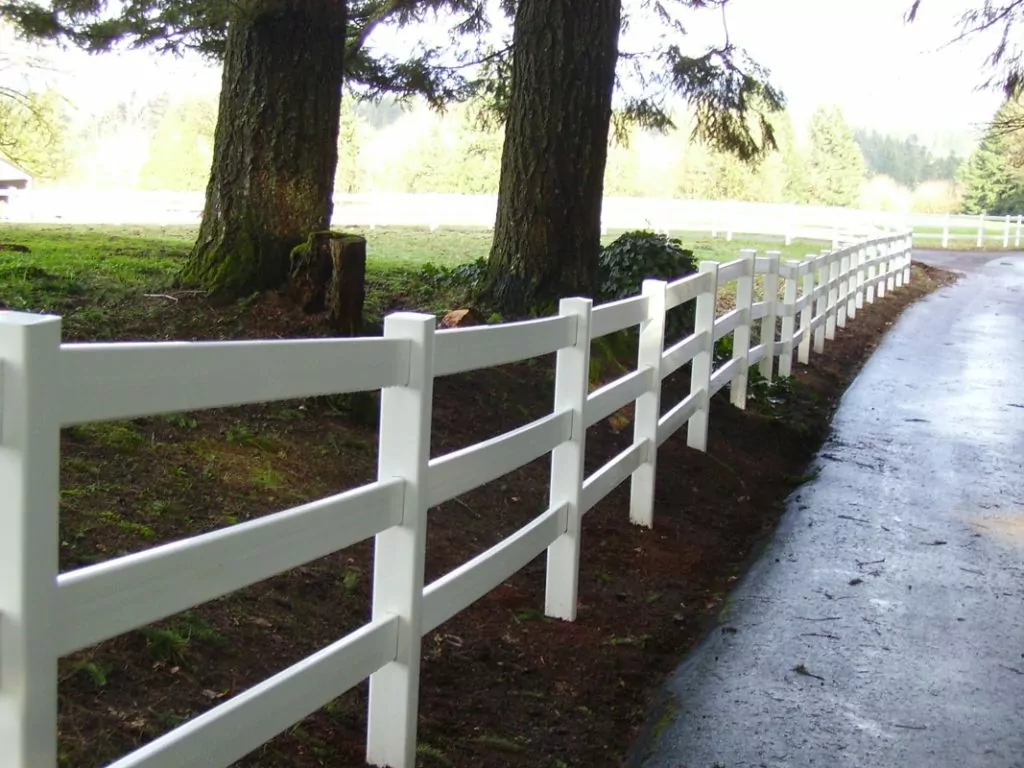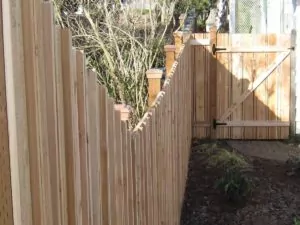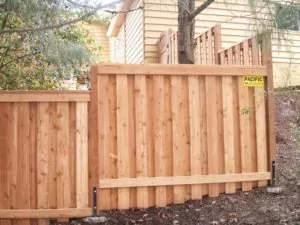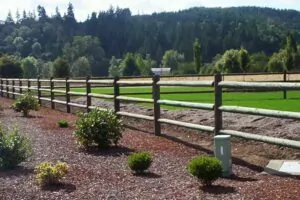Vinyl fences have become popular in recent years because they are affordable and versatile. They come in a variety of colors and textures, so no matter what style you prefer, there will be a vinyl fence that matches your home. But the benefits of vinyl fencing don’t stop there.
Your new fence will be with you for years, so it’s smart to weigh your options before you make a final decision. Whether it’s vinyl, wood, wrought iron, or chain link, each has its advantages and disadvantages. For this blog, we’ll go through the benefits of vinyl fencing and you’ll see why it’s such a favorite of homeowners.
What are the Benefits of Vinyl Fencing?
Although traditional cedar fencing or chink-link fencing still ranks pretty high when it comes to go-to materials for residential use, vinyl is making inroads. And it’s easy to see why: there are a ton of benefits of vinyl fencing, including:
- Easy Installation
- Affordability
- Functionality
- Low Maintenance
- Long Lasting
- They Look Great
- Eco-Friendly
Easy Installation
Installing a vinyl fence can seem daunting, especially if you’re new to fencing projects. However, with proper prep work, the process can be relatively straightforward. One of the main reasons a vinyl fence is easy to install is the fact that panels have already been made in some cases. The biggest job for you is installing the fence posts.
But while easy installation makes vinyl fencing attractive to many do-it-yourselfers, there is still plenty of planning involved. With a wood or chain link fence, you can make little alterations as needed. For example, if you installed the fence posts a little bit too close to each other, you can always cut the excess off the end of the wood rail.
Vinyl panels are manufactured to specific measurements, whether the vinyl fence is made in panels or created with posts, rails, and slats. Everything is made to fit together in certain lengths, and if you’re off by a few inches, it’s much harder to make those little alterations.
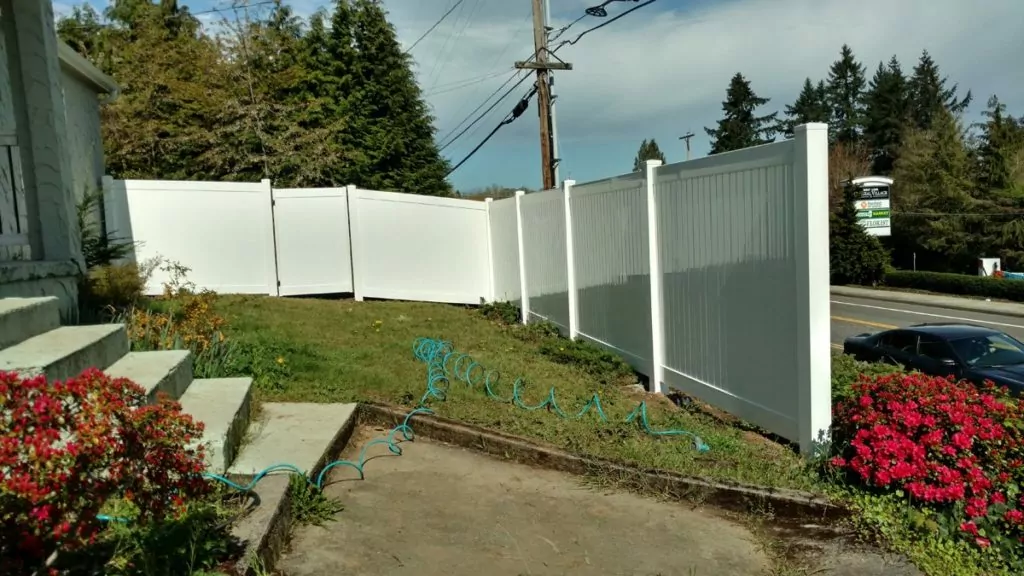
Vinyl Fence Installation Prep Work
First things first, though: if you are installing a vinyl fence as a way to mark your property, make sure you know where the property line is. If you miscalculate the fence and build it on your neighbor’s property, you may be required to take it all down and start over in the right position. Fences make good neighbors–unless you accidentally take a foot or two of their land!
If you have an HOA, double-check to make sure vinyl fencing is an option in your neighborhood. There may even be certain styles, heights, or colors of vinyl fencing that are needed to adhere to the codes and regulations of the HOA agreement. Heights can even differ between fences in the front and back yards.
You also want to be mindful of any infrastructure lurking just below the surface. You don’t want to accidentally break through any plumbing, electric, telecommunications, or other buried lines when digging the post holes. In Portland, you can call the Oregon Public Utility Commission to locate and mark any services that have been buried underground.
How to Plan a Vinyl Fence Installation
You know where the property line is and all of your utilities have been marked: now it’s time to get your hands dirty! The best way to ensure your fencing is straight is to use stakes and a string line. This also helps you know where your property line is and keeps the fence on your property.
Now you’ll mark where the post holes will be dug following the manufacturer’s guidelines for distance between each post. You’ll need to go at least 18 inches deep, although you may need to go deeper depending on the manufacturer’s recommendations. If the posts are eight feet long for a six-foot fence, you’ll need to go 24 deep on your post holes for example.
Don’t forget to plan for the gate! This will alter where post holes go because chances are, you won’t have a six or eight-foot-wide gate. Once you know how many post holes you have, you can determine how many bags of concrete you’ll need for each post.
We highly recommend using a post-hole digger because you can be much more precise with your holes, saving on concrete. Following the guidelines, either place the posts in the hole and fill it with concrete or fill the hole with concrete and then push the posts into place, allowing the concrete to fill the inside of the posts for more stability.
Allow the concrete to set for 24-48 hours and then follow the directions to install the rails and slats or the panels into place. When you’re finished, you’ll have a new, stylish fence that will give your yard an immediate facelift. Vinyl fence installation is easy when you’ve taken the time to plan everything out and follow all manufacturer recommendations.
While installing a vinyl fence may require some effort and attention to detail, following these steps can help simplify the process, even for beginners. Don’t hesitate to seek assistance from friends or professionals if needed.
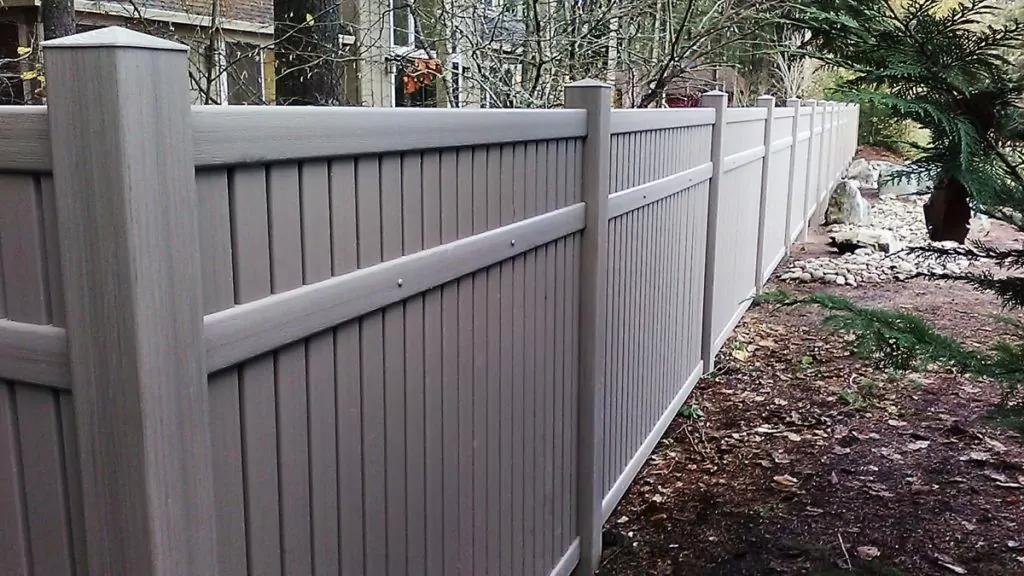
Vinyl Fences are Affordable
Vinyl fencing is affordably priced, especially when compared to other types of fencing. Not only is the material an economical choice, but there is no maintenance required in the long term which means you’ll save money on repainting or other treatment costs on the fence.
That’s where vinyl fence value really comes into play. With wood fences, you’ll spend a lot of time with upkeep, especially when the slats begin to bow or warp and the fence rails begin to sag. And with the price of wood continuing to escalate, the price of materials is very comparable.
Low Maintenance
If you’re looking for a fence that you don’t need to maintain over the years, vinyl fencing is your best option. You don’t have to worry about painting or staining like you do with wood or adding other protection for metal fencing. This fencing will not rot, mold, or discolor. It’s not vulnerable to termites or other pests.
Vinyl fences are easy to clean, especially when you compare them to a wooden fence. The easy maintenance of vinyl fencing is one more reason this material is becoming so popular. Instead of staining wood fences every few years to keep them looking great, vinyl is easy to clean and keeps looking like new, which leads to low labor costs (including your time spent on cleaning).
Simply spray the vinyl fencing a few times a year to keep dirt and grime from building up on the fence. Let it get away from you for a few years? There are products specifically designed to clean vinyl fencing, including green products, as well as homemade cleaning concoctions that can make the job easier.
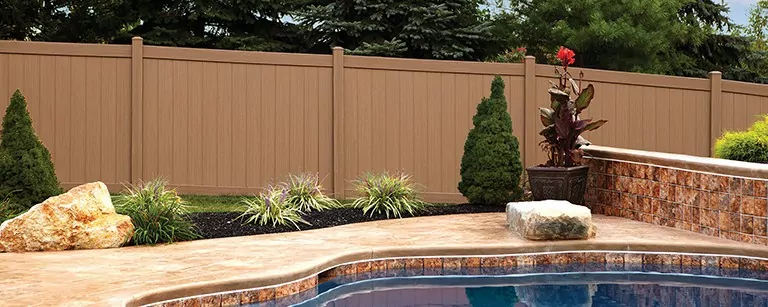
Functionality
Vinyl fences are designed to be sturdy and durable, providing a reliable barrier around your property. Unlike some other materials, vinyl doesn’t splinter or crack easily, reducing the risk of injury, particularly if you have children or pets who like to play outdoors. And more importantly, it keeps your younger children or pets from wandering off while playing, an important safety factor.
Vinyl fencing also adds an extra layer of security to your home by creating a clear boundary between your property and the outside world. With its solid construction and lack of footholds for climbing, it acts as a deterrent to intruders and trespassers, helping to keep your family and belongings safe.
One of the key advantages of vinyl fencing is its ability to create a private and secluded outdoor space. The solid panels and lack of gaps between them prevent prying eyes from seeing into your yard, allowing you to enjoy your outdoor activities in privacy.
Long Lasting
Vinyl fences are strong, known for their durability in almost any environment. This makes them a popular choice among homeowners looking for long-lasting solutions to their fencing needs. They are constructed using high-quality PVC (polyvinyl chloride) material, which is inherently strong and resistant to damage. This durability makes vinyl fencing capable of withstanding various external pressures and impacts, ensuring that it remains intact and functional for years to come.
The design of vinyl fences incorporates sturdy panels and reinforced posts, providing structural integrity and support. Stronger than wood fences, vinyl doesn’t warp, rot, or splinter over time, maintaining its strength and stability even in challenging environmental conditions.
The weather resistance of vinyl fences means they can stand up to true four-season climates, taking snow, humidity, and extreme temperatures head-on. Unlike wood fences, which can deteriorate and decay when exposed to moisture and sunlight, vinyl maintains its appearance and structural integrity, making it an ideal choice for outdoor environments.
Because they are so durable, many vinyl fencing manufacturers will offer a warranty on their products, providing homeowners with added assurance of durability and performance. These warranties typically cover defects in materials and workmanship (when installed correctly), offering peace of mind and protection against unexpected issues.
More Benefits of Vinyl Fencing: They Look Great!
A perfect combination of form and function, the durability of vinyl fencing is matched by its aesthetic appeal. Vinyl fences come in a variety of styles, colors, and textures, allowing homeowners to choose a design that complements their property’s aesthetics.
Whether you prefer the classic look of white picket fences or the modern appeal of sleek panels, vinyl fencing offers versatile options to suit your taste and style. They can be made to look like traditional white picket fences, ranch fences, and more.
Along with their variety of styles and colors, vinyl fencing also offers flexibility when it comes to adding fence extensions, gates, or other accessories like post caps and hardware. Black hinges and latches on a white fence will give homeowners looking for classic aesthetics exactly what they want.
And unlike some other fencing materials that may fade, warp, or deteriorate over time, vinyl fencing maintains its appearance and color for many years with minimal maintenance. The durable PVC material is resistant to fading from sunlight, ensuring that your fence looks as good as new for years to come.
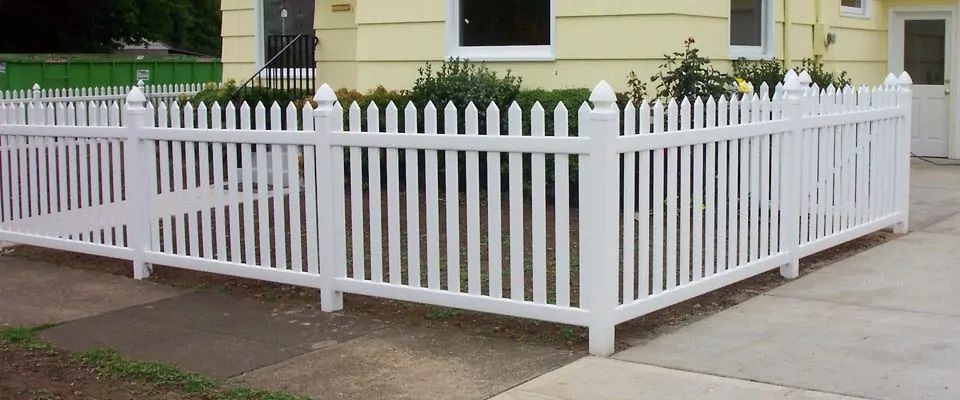
Is Vinyl Fencing Environmentally Friendly?
Vinyl fencing offers several eco-friendly benefits that make it an appealing choice for environmentally-conscious homeowners. Vinyl fencing is primarily made from polyvinyl chloride (PVC), a type of plastic that is recyclable. Vinyl fencing is recyclable and can be made into other products, reducing waste and minimizing its environmental impact.
Unlike wood fencing, which often requires chemical treatments to prevent rot and decay, vinyl fencing is resistant to moisture, mold, and pests without the need for chemical additives. This reduces the environmental footprint associated with the production and maintenance of the fence.
Vinyl fences are not treated with harmful chemicals. In addition, vinyl is composed of 51 percent chlorine (derived from salt) and 49 percent hydrocarbons (derived from natural gas), making it non-toxic. Vinyl fencing is incredibly durable and long-lasting, requiring minimal maintenance compared to other fencing materials like wood or metal.
Because vinyl fences don’t rot, warp, or corrode, they have a significantly longer lifespan, reducing the need for frequent replacements and conserving resources in the long run. Even vinyl fencing manufacturing processes have become more energy efficient over time, reducing energy consumption and greenhouse gas emissions associated with production.
Are there any Cons of Vinyl Fencing?
While vinyl fencing has many advantages, it’s important to consider some potential drawbacks. Vinyl fencing can be more expensive upfront compared to some other materials like chain link fencing. And if a vinyl fence is damaged, it can be more difficult to repair than a wooden fence as individual components may need to be replaced rather than repaired.
Vinyl is recyclable, but it is not biodegradable. This means that if not properly recycled, vinyl fencing components may persist in the environment for a long time. And, as we said earlier, installing vinyl fencing requires precision, and mistakes during installation can be challenging to rectify. Professional installation is often recommended, adding to the overall cost.
The Benefits of Vinyl Fencing Make it a Great Choice
Vinyl fences are built to last and will maintain their original condition for years. Experts say that vinyl fencing is durable and nearly five times stronger than other types of fencing materials. Because of this durability, it isn’t prone to snap or break. With a vinyl fence, you can trust that you’re picking an excellent fencing solution.
A new vinyl fence will add beauty and an additional level of protection to your yard. Too big a job for you? Reach out to Pacific Fence and Wire for a free estimate. We’ve been a fence company in the Portland area for more than a century and our team of professionals has the experience and expertise to install a quality vinyl fence, improving the overall look of your home.


